Binding of a well on a country site
The well just drilled at the site does not mean that you have an alternative source of drinking water. Its arrangement and strapping is the next step after drilling operations.
Below will be a detailed description of how the well is being tied with the hands, as well as what options are used for this.
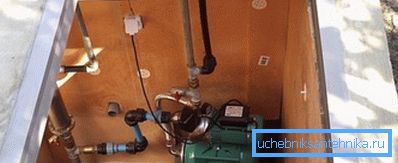
General requirements
In fact, in order for the water to easily rise to the surface, it is necessary to carry out a set of works. They include the installation of the necessary equipment intended for its transportation to the house and the site, since it will not be possible to use the well in another way..
The process of arrangement consists of several stages, the instruction requires to produce them one by one. You can not miss any of them, otherwise you risk in advance expensive equipment.
The piping well includes:
- installation of the caisson directly on the upper part of the casing or on the mouth;
- selection of pumps and their installation, filter systems for the well, the necessary equipment to provide power to the entire system. There are options in which when arranging the inside of the caisson, a hydraulic tank is mounted, which maintains the volume of water necessary for constant pressure;
- arrangement of the trench and laying of a pipe system in it to the water intake points, including the bath and the domestic boiler room;
- installation of main and additional equipment that has not yet been mounted in a caisson.
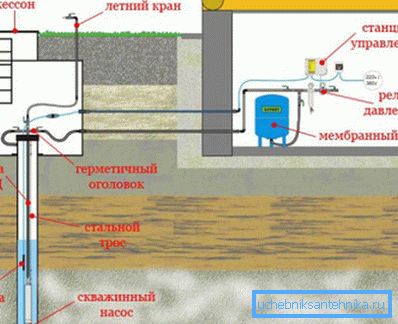
Technological process
Installing the caisson on the top of the casing
Caisson is a tank that can be made of plastic or steel. Its main task is to prevent pollution of the equipped well, as well as its insulation.
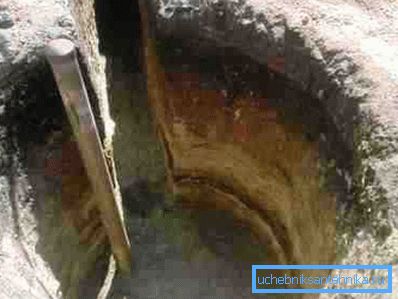
Dig a pit for it, usually about 1 m high. At the top, leave an inconspicuous technological hatch through which it will be convenient to get inside, where there is free access to all equipment.
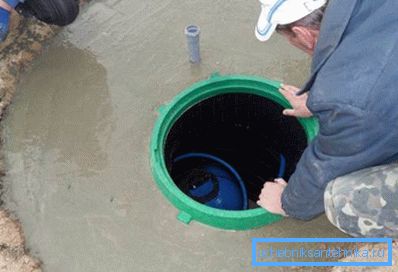
Select pumping and filtering systems
Before choosing equipment and a method of strapping a water well, you should know the following parameters: the quantity and quality of the water being raised, as well as the depth of the limestone and sandy layers.
The pump is selected on the basis of static and dynamic water levels, which can be learned in the process of drilling a well. The first is the height of the water column at rest, the second is the level that changes during the operation of the pumping system.
Later to determine the level of the water mirror, for example, when working on the replacement of the pump after a few years, you can level gauge. It needs to be immersed inside the well and calculate the depth by special marks.
Tip: you will be able to raise the water to the surface with a pump only if you know the exact depth of the aquifer, the debit of the well along with all consumers.
You have to remember that the choice of a pumping system when setting up a well play a decisive role in the head and amount of water from the tap. You should not save on equipment in this case, purchase only the recommended one for your needs.

Accumulator
Its use makes it possible to increase the service life of the pump and the service life of the entire system. You can install it indoors inside the house, inside the boiler room or caisson.
Installing a hydroaccumulator will significantly reduce the load on the pump, reducing its wear and tear to minimum values by adjusting the on-off switch. If the system will work for a long time, the load will still increase on it, therefore even the most resistant similar equipment will once or suddenly become unusable.
Choose a hydraulic tank, after consulting with a specialist who can calculate the maximum amount of water consumption. Often, you specifically buy more powerful equipment that can never work at full capacity, but its price will be much more expensive than what is necessary.
Tip: before you go to the store or make an order, you need to calculate everything correctly, so as not to spend extra money.
Supply pipeline and installation of additional equipment
Year-round supply of water to the house is possible, but for this it is necessary to eliminate the slightest possibility of its freezing along the way to the house. Construction of the well provides for its warming, for which use the caisson.

If you do not have the opportunity to insulate the pipes leading to the house, they should be placed at a level below the freezing depth in the area. Otherwise, it is necessary to prepare foam chips with slag or mineral wool, but with protective concrete slabs on top. Now no frost will stop the passage of water to the shelter.
Pit
Another option is strapping, the use of a pit, which, unlike a caisson, can be made from scrap materials.
It is simpler in the device and is often used as an alternative without the involvement of specialists.
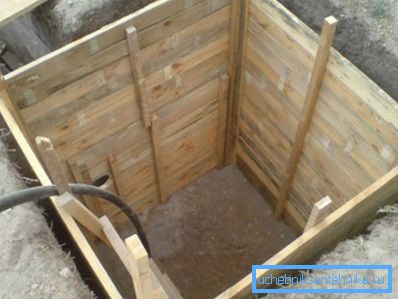
- Dig a hole over the well to a height of 1.5-2 m.
- Insert well rings into it, and you can brick the walls, fill them with concrete, or make wooden formwork.
The advantage of the design - the cost, the negative - poor tightness. Also here it is impossible to place the pump station, the hydroaccumulator and other equipment.
Conclusion
Construction of a well is a responsible business, on which the quality of drinking water and the period of its operation depend. Do not rush to start work without consulting with experts. In the presented video in this article you will find additional information on this topic.